
Chihuahua
Nov. 5-6, 2006

We are now in the city of Chihuahua, which is also the capital
of the state of Chihuahua. Chihuahua is large, about a million people, and full
of activity. Our "campsite" is the parking lot of the baseball stadium at the
University and is in the center of the city, which is very convenient for
sightseeing, shopping, etc.
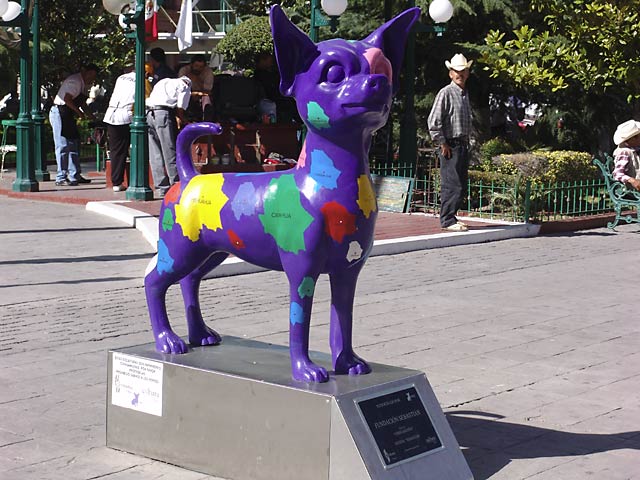
We saw several of these models of chihuahua dogs painted in
bright colors, sort of like the "cows" in Madison this summer. The chihuahua
species of dog didn't originate in Chihuahua, but in the Philippines.
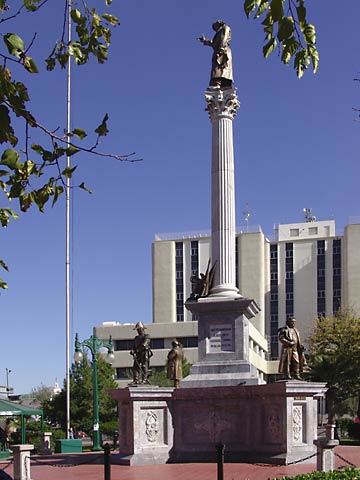
Chihuahua is a city of statues depicting important figures in Chihuahuan and Mexican history.
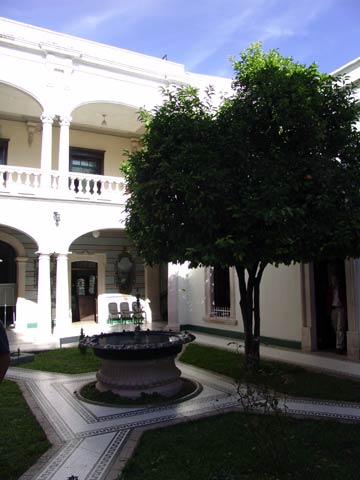
The Museo Casa de Villa, which is now a museum run by the
military, was the home of Pancho Villa. He lived here during the time when he
was governor of Chihuahua. It is said that Pancho Villa had 23 wives, but only
divorced one of them. His official wife, Dona Luz Corral de Villa, lived here
until her death in 1981. The property was then turned over to the military as a
museum.
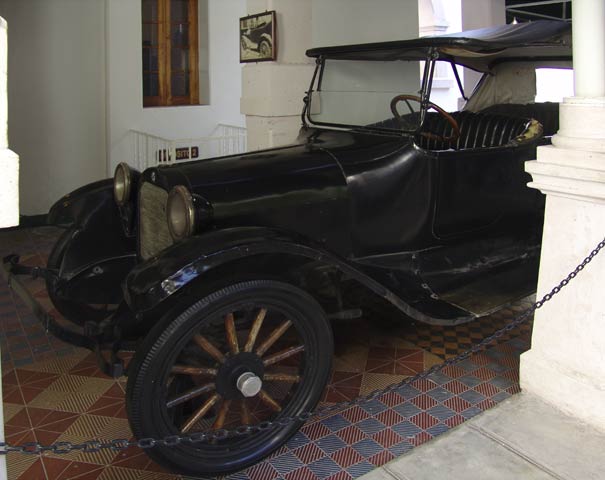
On display in the museum is the 1922 Dodge in which Pancho Villa
was riding when he was assassinated in 1923.

A collection of masks and other pieces of art in a store across
from the Pancho Villa museum. The Day of the Dead, Nov. 1-2, was just a few days
ago and is still celebrated widely in Mexico.

The RV tour company organized a taco cookout in the stadium
parking lot that evening. The tacos were good, and it was a lot of fun - sort of
like a tailgate party.
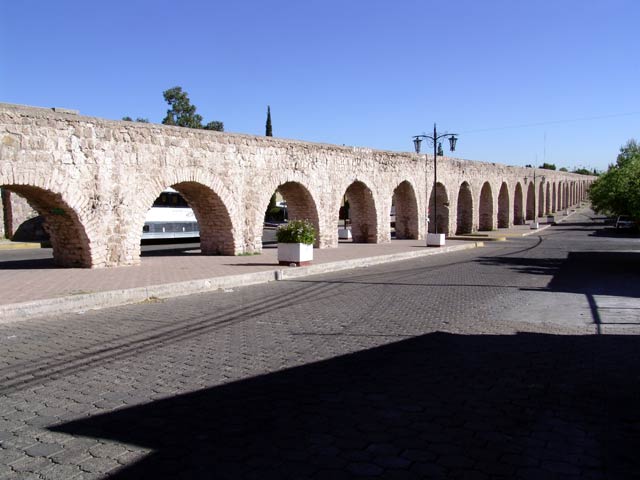
The aqueduct built by the Spaniards in 1786; it brought water to
the silver mines in the area. It reminded me of the aqueducts built by the
Romans.
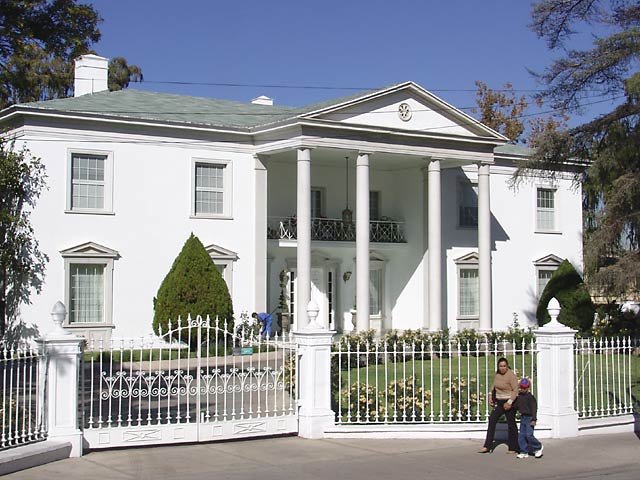
A private home in Chihuahua. It is hardly typical. The wife had
seen the movie, "Gone with the Wind", and wanted a home just like "Tara", so her
husband built this home.
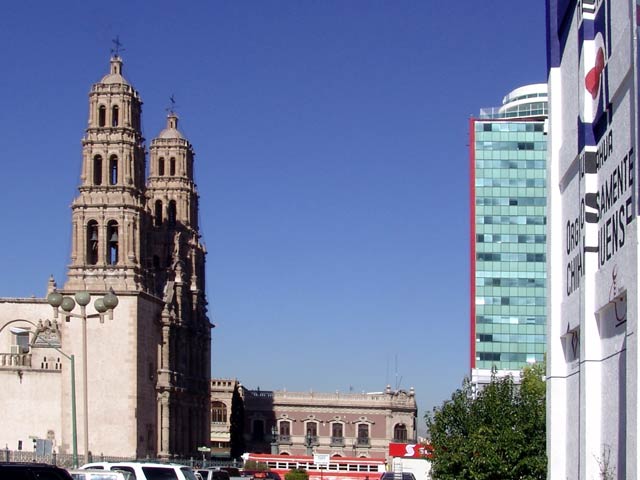
The cathedral in downtown Chihuahua. They have started letting
modern skyscrapers be built next to it. That is a shame.

The interior of the cathedral.
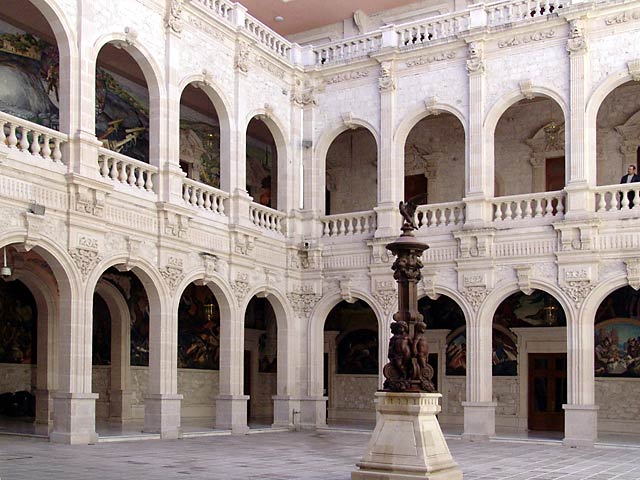
The interior of Government Palace, which was constructed in
1881. The murals on the walls were painted by one artist in a three year period
in the 1950s. They depict 500 years of Chihuahuan and Mexican history, from the
time of the Spaniards to the Revolution in 1910.

The final mural in the sequence; this one shows Pancho Villa
fighting from horseback during the Revolution.

Our entertainment at dinner was an exhibition of folk dances by
some middle and high school students. Click here for a
video clip of one of the dances (.mov format, 21 MB, 16 sec. duration)
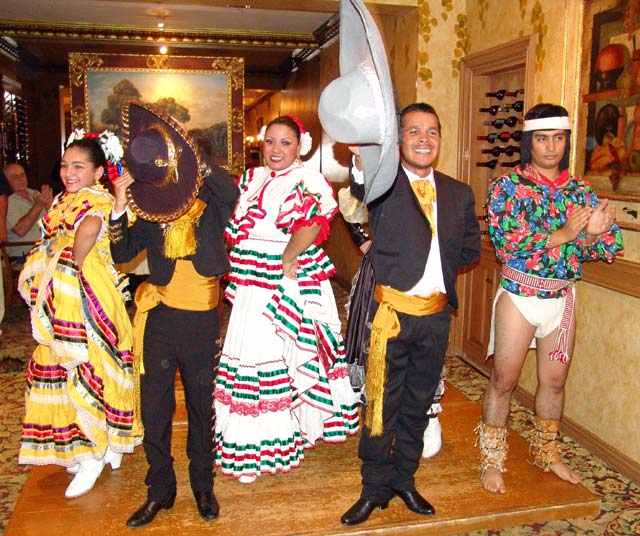
Some of the dancers taking their bows. They were very fun to
watch.